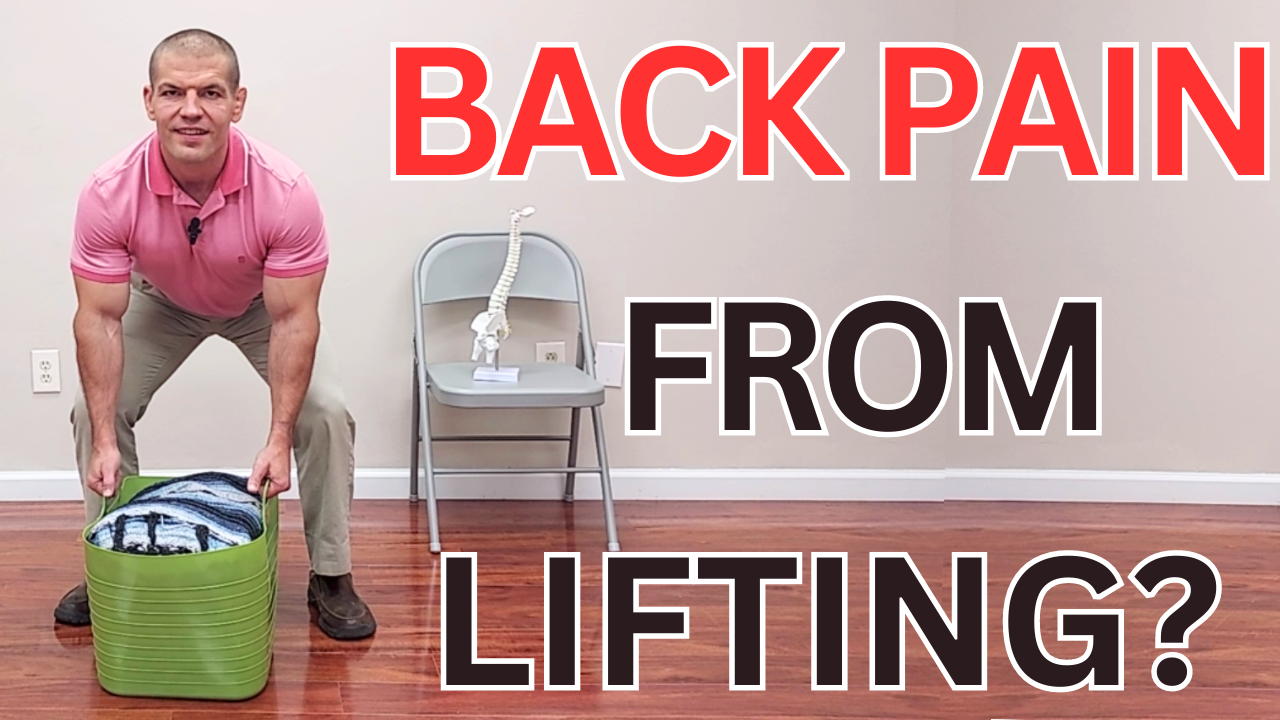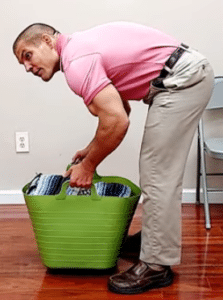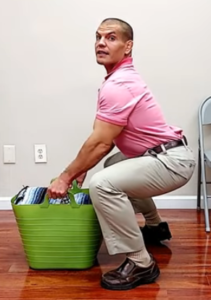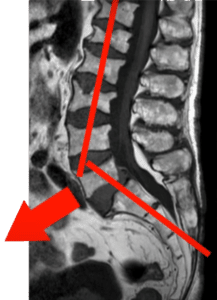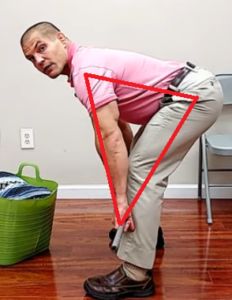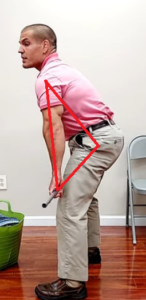If your back hurts from lifting, you may have heard the phrase "Lift with your legs, not with your back." But newer research shows that that advice may not be quite as black and white as people once thought.
Watch the video to learn why this advice may be outdated, plus how to lift without hurting your back.
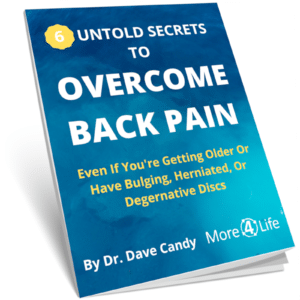
Is "Lift With Your Legs, Not With Your Back" Outdated?
According to a 2021 research study in Frontiers in Bioengineering and Biomechanics, they studied two different lifting techniques, along with just the "whatever feels natural to you" (freestyle) technique.
They found that a stoop lift with straight legs and a rounded back actually created fewer compressive forces in the lower back than a squat lift. ("Lift with your legs, not with your back.")
Most people, including most physical therapists, would say that the stoop lift is "bad lifting technique" and that the squat lift is "good lifting technique".
But the study results didn't necessarily support that long-held belief.
2 Different Lifting Techniques
In the study, they told subjects to do the stoop lift by keeping their legs straight, bending at their back, and lifting primarily with their back.
For the squat lift, they told subjects to keep their back as straight as possible and lift only with their legs.
How These Lifting Techniques Affect Your Back
What they found is that when you're more vertical, the compressive forces through your spine are actually greater.
That makes sense because gravity is compressing downward on your spine.
Conversely, they found with the stoop lift, where you round it out like that, that the compressive forces along the spine are less, but the shear forces going perpendicular to the spine were greater.
Now there's a caveat to that because they found that at L5-S1, the shear forces were actually greater with the upright squat lift.
And let's face it, L5-S1 is one of the most common levels where people tend to get back pain.
How Does This Relate To Back Pain When Lifting?
Largely, the spine is better designed to withstand compressive forces than shear forces.
However,since the shear forces are actually GREATER at L5-S1 doing the squat lift, it may not be ideal if your back hurts from lifting.
When you're lifting with a perfectly upright spine, you've still got to bend somewhere. So largely, you have a very straight spine through the upper lumbar spine. Then right down at L5-S1, you get a sharp curvature.
That creates a wedge-like shape where that L5 vertebrae will tend to slip forward.
In extreme cases, when you're doing really, really heavy lifting, you can even get a fracture of the vertebrae (spondylolysis).
In this case, part of the vertebra breaks which allows the rest of the vertebra to slide forward (spondylolisthesis).
What To Do If Your Back Hurts From Lifting
Likely there's a happy medium between getting too much shear force with this rounded stoop lift and the perfectly upright squat lift.
If we look back to an older version of this study done by Kingma et al. in 2004, they found that there are some things that are consistent regardless of lifting technique.
Obviously, the heavier you lift, the higher the loads are going to be. No matter what technique you use, heavier loads will result in higher forces.
Additionally, the lower the object is to the ground or the lower you lift it from, the greater the force on the spine because you have to bend farther to lift it.
Finally, the further away from you the object is, the more torque it creates on your spine. So if you have to lift something far away from you, it's a lot harder than if it's right underneath you.
So those are some variables that you can control.
Additionally, there's a happy medium somewhere between the stoop lift and the squat lift.
If you look at the way that powerlifters do a deadlift, they have the bar right up against their shins so that it's close to them.
Then they don't squat down. Rather, they push their hips back while allowing their trunk to bend forward by hinging at the hips.
So their spine is still in a neutral position. It's not rounded like in the stoop lift, but it's also not vertical like in the squat lift.
This creates a triangle between the weight, the hips, and the shoulders.
As you lift, you want to keep the spine in a neutral position while pushing your hips underneath of you and dragging the weight up your legs.
So the muscles you're using to lift are primarily your gluteal muscles and hamstrings.
You're also co-contracting your abdominal muscles and lower back muscles.
So you're not doing a back extension type of movement using your lower back muscles. Your abdominal muscles and your lower back muscles are creating a brace around your spine.
That does create some vertical compression (which again, the spine is well equipped to handle), but it also stabilizes against shear forces.
So to summarize correct deadlifting technique:
- Stand close to the object you're going to lift.
- Push your hips back with your spine neutral.
- Push your heels through the floor.
- Squeeze your glutes (buttock muscles) and drive your hips underneath you, keeping the spine in a relatively neutral position.
That same technique applies whether you're doing a deadlift or whether you're just lifting an object from the floor in everyday life.
So in one respect, you're neither lifting with your back nor your legs (quads) as prime movers. You're really lifting with your glutes.
In another respect, you're using your back muscles isometrically to stabilize your spine while using your legs (hamstrings) to assist your glutes in doing the lift.
So you see, the old adage, "Lift with your legs, not with your back" isn't quite so black and white.
You really use both of them, but differently than the way that statement implies.
Conclusion
Hopefully this article helped you better understand proper lifting technique so that you can lift without hurting your back.
Again, remember, the things that are consistent regardless of lifting technique are:
- The lighter you can make the object, the less stress on your back.
- The higher up you can lift from, the less stress it is versus lifting low.
- The closer you can get to the object, the better off you are than if you're lifting it from far away.
And when you do need to lift something heavy from the floor, using the hip hinge deadlifting technique can help prevent back pain when lifting - even if you're just lifting in everyday life.
If your back hurts from lifting even after applying these techniques, it's a good idea o get help from a physical therapist who understand proper lifting mechanics.
Need Help For Back Pain?
If you live in the St. Louis area and you need more help for back pain, we'd be happy to help. Just tap the button below to request an appointment with one of our specialists.
Like this post? Check out some of our other post about exercises for lower back pain
Lean Forward When Walking? 3 Exercises to Stop Walking Hunched Over
Things To Avoid With Degenerative Disc Disease and What To Do Instead
8 Stretches For Lower Back Pain and Hip Mobility
7 Exercises For Arthritis In Lower Back

